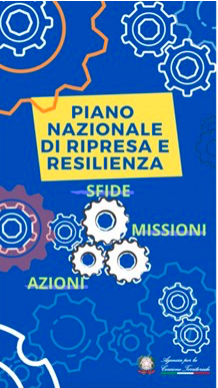by Lorenzo Codogno e Giampaolo Galli, Il Sole24Ore, 11 dicembre 2020

The NRRP – National Recovery and Resilience Plan for the use of funds from the Next Generation EU – is a document that affects almost all areas of the Italian economy and society. As such, it lends itself to being judged from multiple points of view. It is understandable that the different political and social forces, as well as scholars, focus on the things that are not right in order to intervene to correct them.
Many have criticised the plan because of its governance. It seems to introduce a parallel structure that is independent or perhaps complementary to that of the various competent administrations. Others focused on the lack of concreteness of many of the strategic actions of the plan.
They complained that other countries are ahead of Italy in the preparation of individual operational projects to be submitted to the Commission, while others about the lack of attention to strategic sectors for the country, such as tourism.
Little has been said, however, about the vision that informs the document. The vision is essential because it builds the political consensus that is necessary for the implementation of the plan, especially where it includes, as asked by the Commission to Italy, deep structural reforms such as that of the Public Administration and Justice.
We share the vision that informs the document. From the very first lines, in the premise signed by the Prime Minister, Italy’s problem is clearly identified in the lack of growth. And that is not attributed to external factors, as often said in the narrative of populism, but to internal structural problems. “Italy – says the introduction – for over 20 years has struggled to keep pace with other advanced economies (…). Behind Italy’s decline there are known structural problems never addressed with sufficient determination”. To overcome this state of affairs, it is first of all necessary to “concentrate efforts on education, higher and professional studies, research, training”. Secondly, it is necessary to “remove the main obstacles that prevent the country and its rich entrepreneurial fabric from growing as it can and know how to do. This means, first of all, tackling some essential reforms with determination: that of civil and criminal justice, to guarantee (…) streamlined proceedings and rapid trials; that of the Public Administration…”.
These themes – the low growth of the Italian economy and the internal structural factors that cause it – are repeated almost obsessively and inform the structure of the entire document. The two pillars of the European strategy – green new deal and digitisation – are translated into the Italian situation and become the levers to get Italy out of its long stagnation and reduce the many inequalities that the crisis has exposed.
Another key point of the document is the need to reduce the debt-to-GDP ratio. In this regard, the first part dedicated to the overall objectives presented a graph taken from the NADEF. It shows the debt-to-GDP ratio, after the 2020 surge, returning to 2019 levels over the next ten years. Indeed, it is stated that “[this] debt reduction plan may be revised by making it even more ambitious”.
For many years the National Reform Programme repeated very similar concepts. Each document included the signatures of the Prime Minister and the Minister of Economy and Finance, and the entire government approved it. Still, for the most part, it remained a dead letter.
For the first time, however, these concepts have been summarised in a strategic document that looks to the future. Above all, it already has the financial resources for its implementation. Even in the current document, Italy’s decline is mercilessly documented by comparative indicators from the OECD, the World Bank and other international organisations. Some may argue that these are all things known and written many times and that the real added value, i.e. concrete plans, is missing.
However, having a vision is important. It is even if – to avoid any doubt – it is not a sufficient condition for the success of the plan. Genuine political consensus in the country and at the top, political, technical and administrative staff who subscribe to that vision, know how to translate it into projects and be able to successfully face the challenge of their realisation are of the essence.
